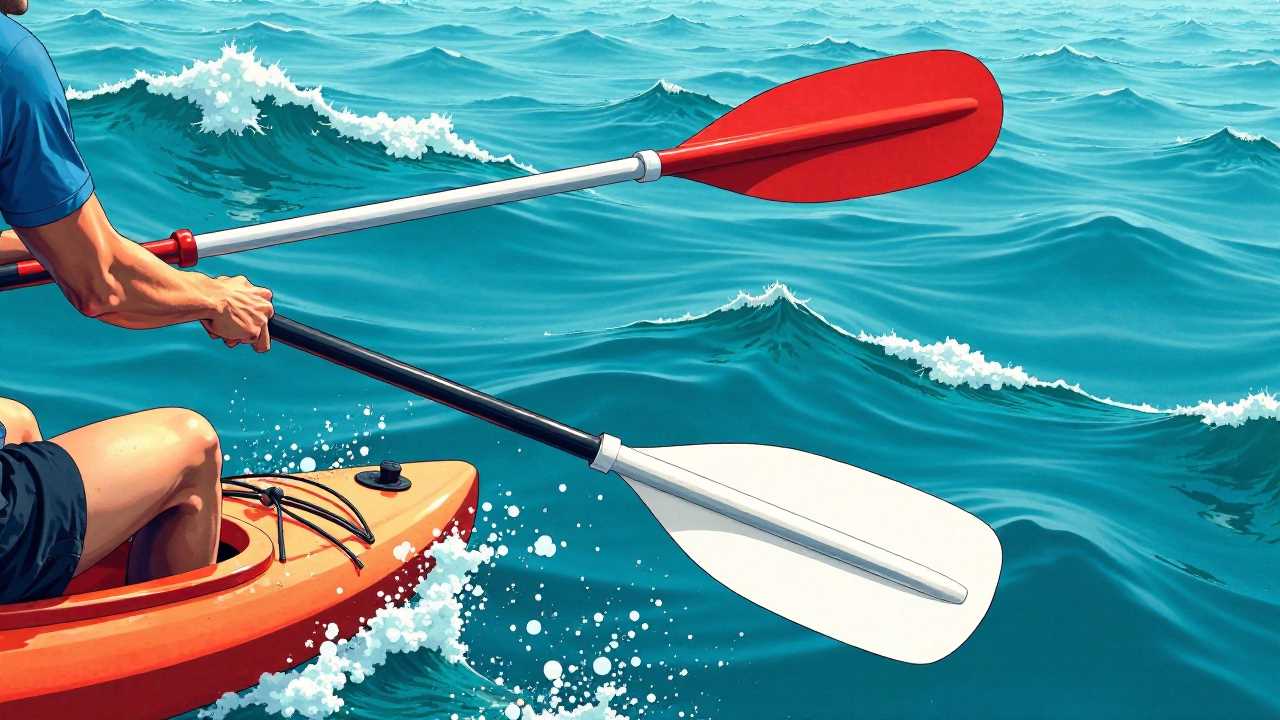
Understanding Kayaking Paddles
Kayaking paddles are not just tools; they are the lifeline that connects you to the water. Choosing the right paddle can significantly enhance your experience, whether you are gliding through serene lakes or tackling the waves in adventure racing. The design, material, and length of the paddle can affect your performance and comfort. Paddles come in various shapes and sizes, tailored for different water sports, including kayaking, paddleboarding, and canoeing.
The Anatomy of a Kayaking Paddle
A typical kayaking paddle consists of two main components: the shaft and the blades. The shaft is the long, cylindrical part you hold, while the blades are the flat surfaces that push against the water. Paddle length is crucial; it should match your height and the width of your kayak. For instance, shorter paddles are ideal for narrow kayaks, while longer paddles work best for wider vessels.
The material of the paddle also plays a significant role in its performance. Paddles can be made from various materials, including aluminum, fiberglass, and carbon fiber. Aluminum paddles are durable and affordable, while fiberglass paddles offer a balance of weight and strength. Carbon fiber paddles are the lightest and most efficient but come at a higher price point.
Paddleboarding: A Complementary Water Sport
Paddleboarding is another exciting water sport that utilizes a paddle, similar to kayaking. However, the technique and experience differ significantly. In paddleboarding, you stand on a larger board and use a longer paddle to propel yourself forward. The skills you develop in kayaking can enhance your paddleboarding experience, as both sports require balance, coordination, and an understanding of water dynamics.
When transitioning from kayaking to paddleboarding, consider the paddle length again. Paddleboarding typically requires a longer paddle than kayaking. The paddle's blade shape can also vary, with wider blades providing more power for quick strokes, while narrower blades offer better efficiency for longer distances.
Canoeing: A Traditional Water Sport
Canoeing is another water sport that shares similarities with kayaking but has its unique characteristics. Canoes are generally open-top and can accommodate more people, making them ideal for family outings or group adventures. The paddles used in canoeing are often single-bladed, requiring a different technique compared to the double-bladed paddles used in kayaking.
Understanding the differences in paddling techniques between kayaking and canoeing can enhance your versatility on the water. Canoeing often involves a kneeling position, which can provide better stability and power during strokes. However, this position can also be less comfortable for extended periods, making the choice of paddle and canoe design crucial for a successful outing.
Rowing: A Different Approach to Water Sports
Rowing is yet another water sport that utilizes paddles but differs significantly from kayaking and canoeing. In rowing, athletes face backward and use oars, which are longer and have a different design than paddles. Rowing is often seen in competitive settings, such as crew teams, where precision and teamwork are paramount.
While kayaking and canoeing focus on individual paddler experience, rowing emphasizes synchronization and technique among team members. Those who enjoy kayaking may find rowing to be a refreshing change, providing a new set of challenges and skills to master.
Adventure Racing: The Ultimate Challenge
For those seeking adrenaline and excitement, adventure racing combines various outdoor sports, including kayaking, mountain biking, and trekking. This multi-discipline sport tests not only physical endurance but also mental resilience. Kayaking paddles play a vital role in this setting, as they must be reliable and efficient in various water conditions.
Selecting the right paddles for adventure racing is essential. They should be lightweight for easy transport and durable enough to withstand rough conditions. Many adventure racers opt for collapsible paddles, allowing for easy storage and transport between different legs of the race.
Water Sports and Outdoor Recreation: A Growing Community
The world of water sports and outdoor recreation is thriving, with more people discovering the joys of kayaking, paddleboarding, and canoeing. These activities promote physical fitness, mental well-being, and a deep connection to nature. Engaging in water sports can lead to a sense of community, as enthusiasts often gather for events, races, and social outings.
Joining local clubs or groups can enhance your experience, providing opportunities for skill development, safety training, and camaraderie. Many areas also offer guided tours and classes, making it easier for beginners to get started.
Safety First: Essential Tips for Water Sports
Engaging in water sports comes with inherent risks, making safety a top priority. Always wear a personal flotation device (PFD), regardless of your skill level. Familiarize yourself with the local water conditions, including currents, tides, and weather patterns.
Before heading out, ensure your equipment is in good condition. Check your kayak, paddle, and safety gear for any signs of wear or damage. It's also wise to inform someone about your plans and expected return time, especially if you're venturing into remote areas.
Embrace the Adventure
Kayaking paddles serve as your gateway to a world of adventure, whether you are paddleboarding, canoeing, or racing through the waves. By understanding the nuances of each water sport and selecting the right equipment, you can enhance your outdoor recreation experience. Embrace the thrill of the water, connect with nature, and discover the joy of paddling.
 SportsHollywoodLifestyleFashionHome & GardenTrendsPrivacy PolicyTerms And Conditions
SportsHollywoodLifestyleFashionHome & GardenTrendsPrivacy PolicyTerms And Conditions
